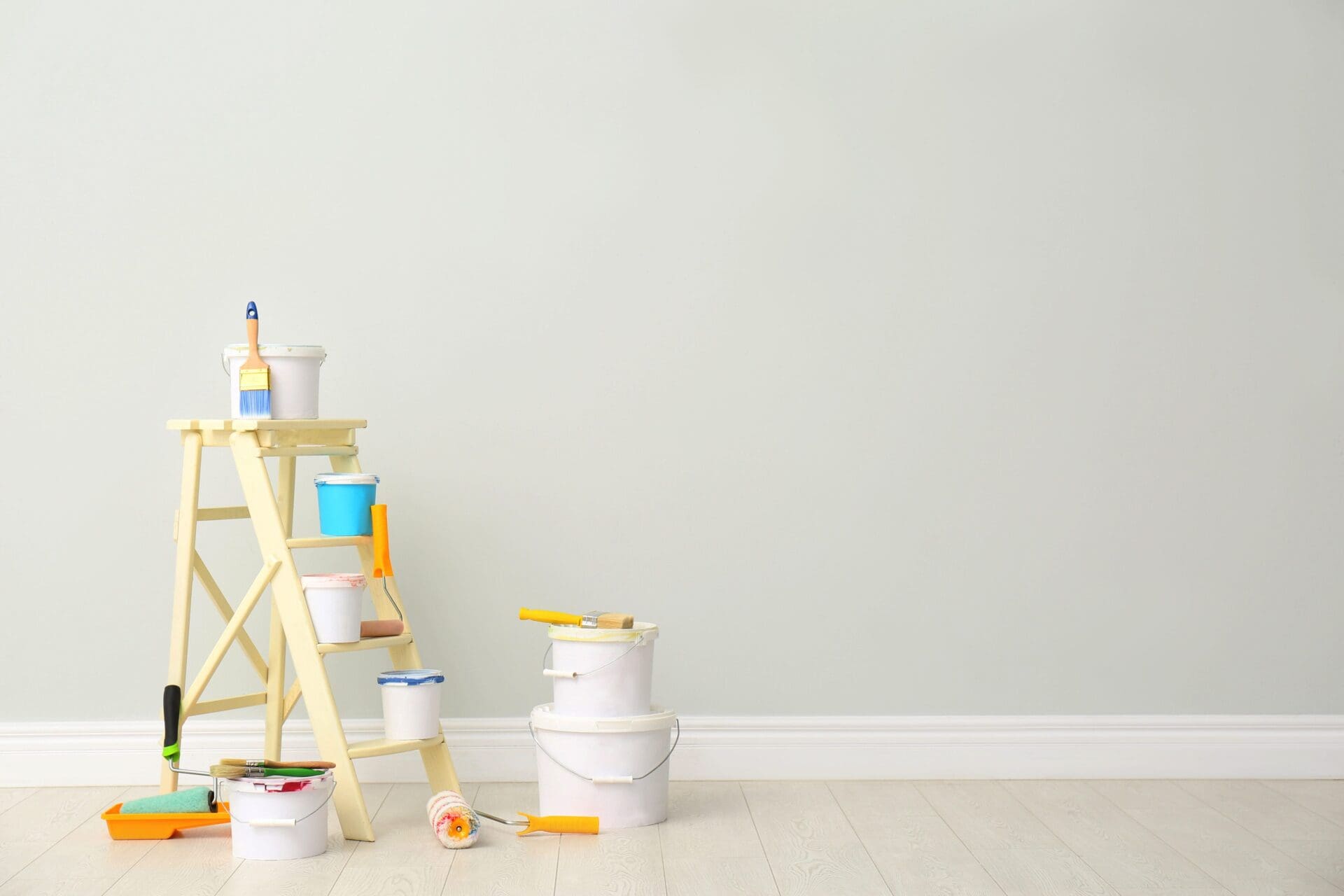Do you have extra paint laying around, and you don’t know what to do with it? Maybe you’ve considered painting the exterior of your home, but the paint is made for interior painting. Long story short, the answer is that it isn’t recommended. Both interior and exterior paint are created for different purposes and can damage surfaces, or our health, if misused.
Interior Paint
Interior paint is created to withstand anything that rubs against it on a daily basis, such as pets, children, or furniture. It resists fading and can be cleaned when it gets dirty. It is usually water-based or latex rather than oil-based, and made up of pigments, solvents, additives, and resins. Interior paint uses more rigid resins, for an easier cleanup compared to exterior paints.
Interior paint also has fewer chemical gases since it is applied to areas where the air circulation is limited.
Exterior Paint
Exterior paint, on the other hand, is created to resist moisture from rain, snow, and wind, and needs to be able to resist temperature drops. Exterior paint contains soft and flexible resins, to help resist mildew, peeling, and chipping.
Most exterior paints are water-based with acrylic resins to aid in binding and contain more additives to boost the durability to withstand the outdoor elements. Because of tricky surfaces on the exterior of homes or buildings, exterior painting is a long process that involves washing and priming the area.
Interior vs Exterior Paint
An important (and dangerous) piece of information about the difference between interior and exterior paint is the odor. Interior paint produces less odor due to a smaller number of chemical gases that release into the air as the paint dries.
These chemical gases can produce a headache or dizziness if people are exposed for too long, or even cause skin or respiratory irritation. Outdoor paint has much more hazardous ingredients, so it shouldn’t be used in an indoor space with little ventilation.
Besides this concern, durability is the next issue that would prevent interior and exterior paint from being substituted. Interior paint cannot be used outside, because it doesn’t contain the chemical additives or composure to withstand the outdoor elements.
Interior paint is thinner than exterior paint and would need many coats to get the same coverage. And even with multiple coats, it won’t appear as smooth as exterior paint.
Finally, it takes longer for interior paint to dry, as it is not created to dry in outdoor elements. This will lead to a poor looking paint-job.
Hybrid Paints
There are such thing as hybrid paints which can be used both indoors and outdoors. However, these are not as effective as traditional interior and exterior paints and lack the necessary ingredients and additives. There is not mildew, moisture, or crack protection, and is less likely to withstand the elements outdoors. Overall, hybrid paints are best for smaller projects, and do better inside than outside.
Let the Experts Help You!
To answer the main question, exterior paints should be avoided indoors for health safety purposes, and interior paints produce poor results when applied outside. Both interior and exterior paints have designated purposes and were designed for particular qualities.
At Arizona Painting Company, our experts know what is best for both the inside and the outside of your home or building. We plan your paint job from start to finish, and have experts experienced in both the interior and exterior painting process. After all, painting the interior and exterior of a house or commercial property is a job best left to a professional painting company to conduct with expertise. Schedule a painting quote today!

